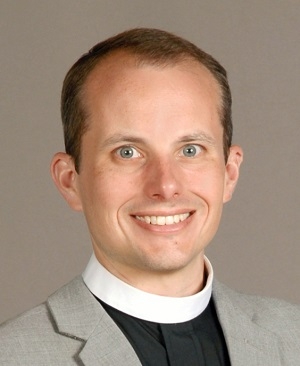From the Rector: Things We've Learned

Dear friends,
Last week I wrote about our congregation's responses to our Imagine Incarnation surveys. As we continue our work toward creating a generational plan for our campus, our members shared their perspectives on ideas like adding new meeting spaces, space for a child care center, or affordable housing, plus possible improvements to our church building. We are seeking to follow the Holy Spirit's guidance for how our special corner of downtown Santa Rosa can fulfill God's mission in the years ahead.
In the time since our last workshop in November, our planning team has also been doing research. In particular, we reached out to a child care consultancy, ICRI, and to several housing developers, including Burbank, SAHA, Christian Church Homes, and Futrell Corporation, to learn about the viability of those two possibilities. I want to share some of what we've learned now, and we'll talk in more detail about these learnings at our next Imagine Incarnation workshop on March 17.
First: child care. One thing that was clear from my conversation with ICRI is that there is a lot of unmet need for child care in our area. Working parents increasingly need full-day care, and many programs have multi-year wait lists. For a viable program, 40 preschoolers, or 70 children in a combined preschool-infant/toddler program, is a reasonable size. If we were to have a child care program on our campus, we could choose either to operate it as a subsidiary of the church or simply to be the landlord to an independent program (for examples of each in Episcopal parishes, see here and here). The former would let us create a program according to our vision, potentially including a faith-based component; the latter would be simpler administratively and present less financial risk.
In either case, it might be possible to share space, so that the facilities could be used for our church Sunday school and nursery programs on Sundays and for child care during the week. As ICRI's director told me, shared space creates difficulties, and child care centers ideally like to have their own dedicated space, but the difficulties can be managed with good planning and communication, and many centers do this regularly.
For the purposes of our generational planning process, the major takeaways are these:
- Hosting a child care center can present challenges but also brings great opportunities and serves a need in the community.
- Our current facilities wouldn't easily support a child care center. However, if at some point in the future we are creating new children's classrooms, it might make sense to design them to fit child care standards, so that we would have the option of sharing space with a child care center.
Second: housing. As we know, our campus is in an area of downtown Santa Rosa that our city and county have been prioritizing for housing development. With that in mind, our team went into conversations with developers thinking they would likely have strong interest in our site. And indeed, these developers were very interested in talking with us. But as the conversations got more detailed, some challenges became apparent.
One is that our location actually does not qualify for some major tax credits from the state of California. The state maintains an opportunity map which ranks neighborhoods by economic mobility, and on this map, downtown Santa Rosa is considered a low-opportunity area. While that could change in the future, for now that significantly reduces the financial incentives for affordable housing on our site.
Another is that although our campus has a lot of underused space, its shape and size are challenging. At our fall workshops, our table groups identified the Mendocino/Cherry corner and the Cherry Street parking lot as the most natural areas where housing might fit. Without the state opportunity tax credit, developers generally felt we would need at least 50-60 units to make a housing project viable, and the scale of building required might be incompatible with its surroundings.
We discussed these learnings with our vestry and our Generational Plan Task Force this month at our retreat. Like our congregation, our vestry and task force have a wide range of feelings about housing. Some have been strongly hoping to see us bring affordable housing to our campus, others have been very cautious about that idea. We came away from our retreat with a few shared takeaways:
- Right now, developers are telling us we do not have an immediately viable housing project on our campus.
- That could change as economic and neighborhood conditions change, so we are not ruling out future housing possibilities.
- For now, though, our generational plan will focus on improvements that are within our reach as a church community, without assuming a housing project as part of the plan.
- The plan will also maintain enough flexibility that we can still consider future development possibilities in those two strategic parts of our campus (Mendocino/Cherry and the Cherry parking lot) in years to come. Our consultant Jim Heid refers to this strategy as "landbanking": finding good uses for spaces for now, while maintaining the ability to develop them in the future if and when conditions change.
I know this is a lot to share in a newsletter article--but our vestry, task force, and I wanted to go ahead and begin sharing these updates now so our congregation is informed. We'll discuss these learnings in more detail at our upcoming workshop on Sunday, March 17, 12:00-2:00 p.m. Our architect team will also show us the work they've done bringing our ideas together into a preliminary campus plan, and we'll invite the congregation's feedback on what parts of that plan are most important to start with first. I hope you'll be able to participate, and then to join us for the final workshop at the same time on April 21.
In Christ's love,
Stephen
Tags: News & Notes